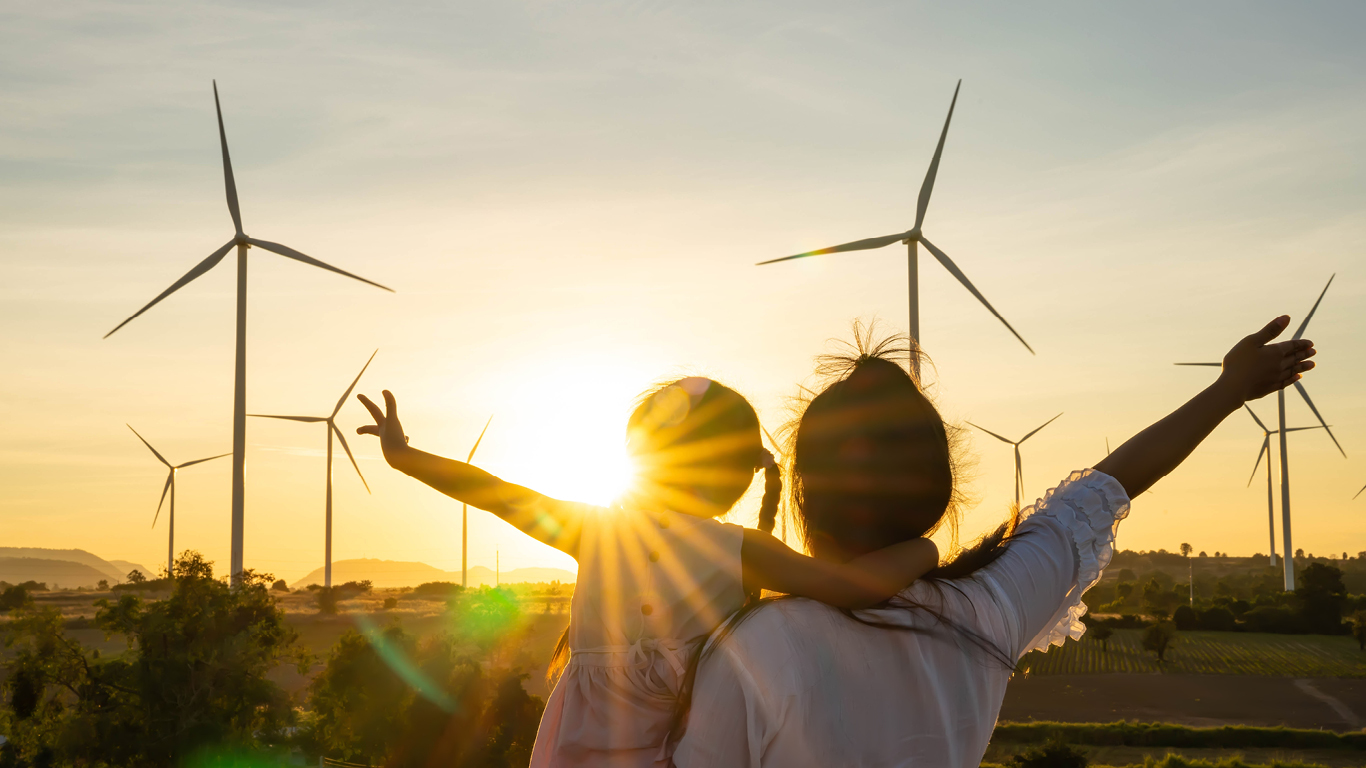
In Aesop’s fable, the sun proved more powerful than the wind. Here in Canada, wind is generating far more power than the sun, but both are overshadowed by the power of water, fossil fuels and nuclear fission.
Storing the energy of the wind and the sun when the “wind don’t blow and the sun don’t shine” is an important step in the transition to a world of lower greenhouse gas emissions. Nearly one-third of the utility companies in Canada employed energy storage systems to better harness the power of the wind and the sun in 2019.
Water is winning the energy battle of the elements in Canada
Canadian utilities and industrial producers generated 640.3 million megawatt hours (MWh) of electricity in 2022, with 89.8% directed towards keeping the stoves and lights on here in Canada and 10.2% exported to the United States. One megawatt hour is equivalent to the power needed to light two 60-watt light bulbs for an entire year.
Given that Canada has the fourth largest renewable water resources in the world, perhaps it is not surprising that water contributes the most to our electrical grid, accounting for 61.3% of total electricity production in 2022, followed by combustible fuels (19.2%), nuclear (12.9%), wind (6.1%) and solar (0.5%).
In 2022, wind turbines across Canada generated enough electricity to light and power every home in Manitoba for almost one and a half years.
Canadian solar farms generated enough power to light every home in Prince Edward Island for almost two years.
Ontario is Canada’s wind and solar leader
Wind turbines were feeding electricity to the grid in every province and the Northwest Territories in 2022. Nova Scotia wind farms generated the most electricity in Atlantic Canada in 2022, followed by New Brunswick, Prince Edward Island and Newfoundland and Labrador.
In Central Canada, Ontario topped Quebec in terms of wind generation (14.3 million MWh versus 10.9 million MWh).
Alberta (7.2 million MWh) was the top wind energy producer in Western Canada in 2022, generating more electricity than the other three provinces combined.
Nationally, wind power production has grown by over one-quarter (+26.4%) since 2017 to 39 million MWh .
Solar power was feeding the electricity grid in seven provinces and two territories in 2022.
Ontario (2.3 million MWh) generated the most solar energy in 2022, followed by sunny Alberta (851,374 MWh) and Saskatchewan (30,097 MWh).
Nationally, solar power generation has increased by over half (+55.7%) since 2017 to 3.2 million MWh.
Winter wind and summer sun
In Canada, the strength of the wind and sun are highly variable throughout the year.
The wind is generally strongest from November to April and mildest in mid-summer.
In November 2022, for example, wind contributed 4.2 million MWh to the Canadian electrical grid, double the electricity generated in August (2.1 million MWh) 2022.
The days are long in the summer in Canada and the amount of solar power delivered was almost four times larger in July 2022 than in January (404,772 MWh versus 105,072 MWh).
In Yukon, solar power delivered 150 times more electricity to the grid in May than it did in December (150 MWh versus 1 MWh).
Supply and demand are like night and day
The other conundrum facing wind and solar power is electricity storage. Currently (pun intended), most of the electricity generated by wind and solar power is delivered directly to the grid and cannot be stored for later use.
The issue is that demand for electric power is highest early in the morning and from 5:00 p.m. onwards when most people are at home cooking, cleaning, and doing the laundry. Supply, however, is strongest during mid-day when the wind blows harder, and the sun shines brightest.
Electricity storage capacity ramping up
For wind and solar to become reliable energy sources, storage capability is required to deliver the energy when it is most needed.
We are currently tracking 112 electricity energy storage systems in Canada, of which 74 are operational. According to the 2022-2023 Energy Storage Report, Ontario leads with 38 operational electrochemical projects, followed by Quebec (9) and Alberta (8).
While 93.3% of Canadian industries have implemented clean technology practices, just under 1 in 30 have developed electric storage capabilities (3.4%).
Utilities are the leading sector for electric energy storage, with nearly one-third of the companies in the sector reporting storage capabilities (32.1%), followed by the management of companies and enterprises (9.6%) and the mining, quarrying, and oil and gas extraction (8.6%) sectors.
For more information on energy in Canada, including production, consumption, international trade and much more, please visit the Canadian Centre for Energy Information portal and follow #EnergyNews on social media.
StatsCAN app
Did you know you can read StatsCAN Plus articles and more on the StatsCAN app? If you’re already using the app, let us know what you think by leaving a review in the Apple App Store and Google Play.
Contact information
For more information, contact the Statistical Information Service (toll-free 1-800-263-1136; 514-283-8300; infostats@statcan.gc.ca) or Media Relations (statcan.mediahotline-ligneinfomedias.statcan@statcan.gc.ca).
